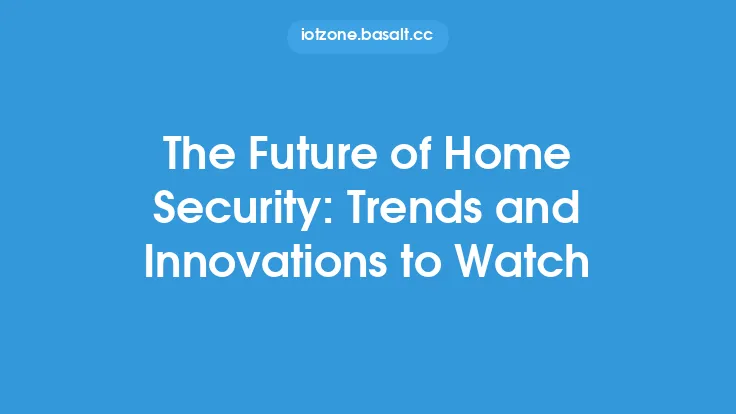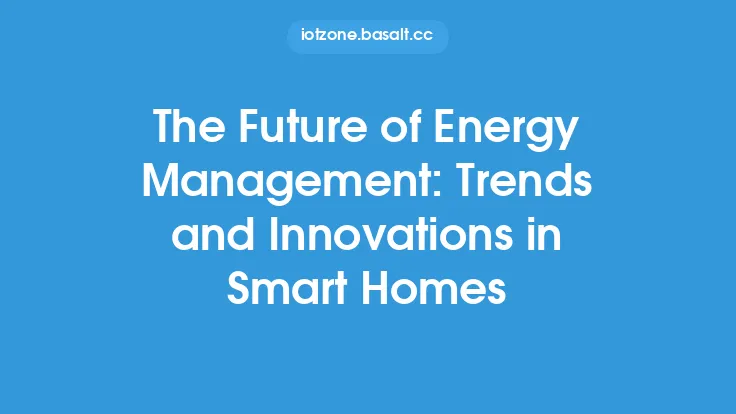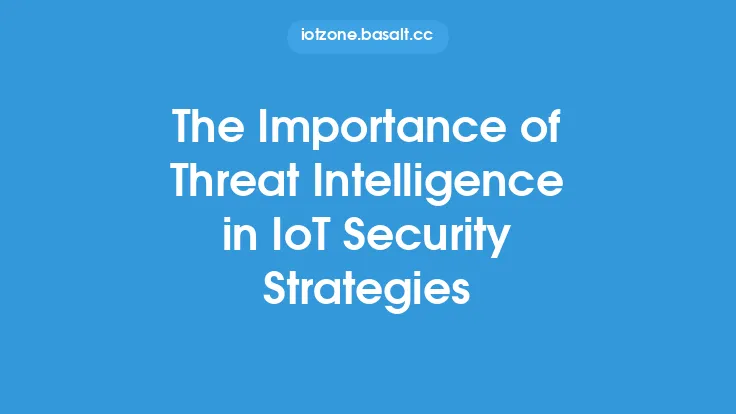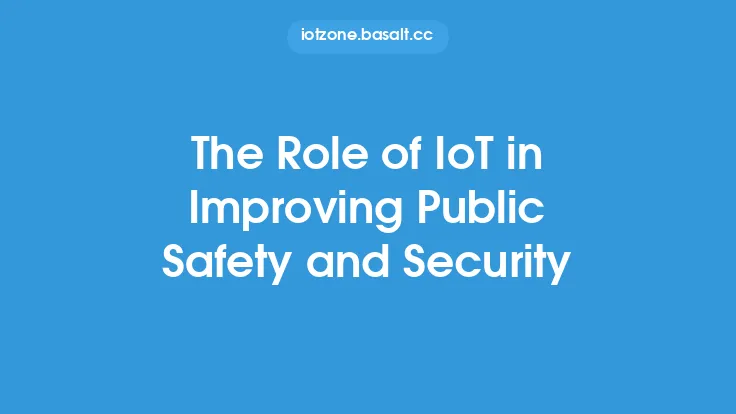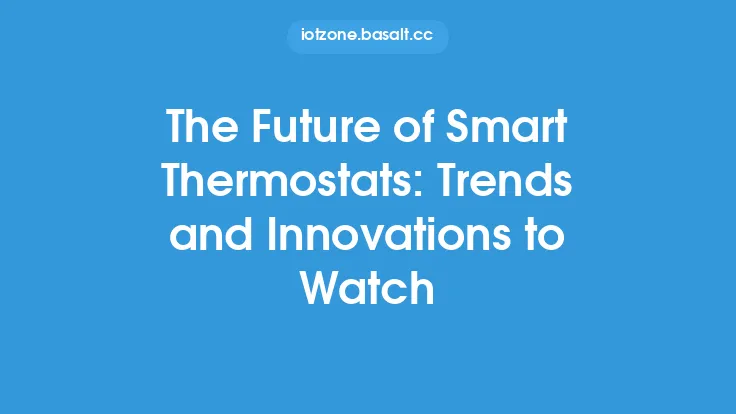The Internet of Things (IoT) has undergone significant transformations over the years, with the number of connected devices increasing exponentially. This growth has also led to a rise in the number of potential vulnerabilities, making IoT security a pressing concern. Threat intelligence has emerged as a crucial component in the realm of IoT security, enabling organizations to stay ahead of emerging threats and vulnerabilities. In this article, we will delve into the evolution of threat intelligence in IoT security, exploring the trends and insights that are shaping the industry.
Introduction to Threat Intelligence in IoT Security
Threat intelligence refers to the process of collecting, analyzing, and disseminating information about potential or actual threats to an organization's security. In the context of IoT security, threat intelligence is critical in identifying and mitigating threats that could compromise the confidentiality, integrity, and availability of connected devices and the data they generate. The IoT threat landscape is complex and dynamic, with new threats and vulnerabilities emerging daily. Threat intelligence helps organizations to understand the tactics, techniques, and procedures (TTPs) used by attackers, enabling them to develop proactive defense strategies.
The Evolution of Threat Intelligence in IoT Security
The evolution of threat intelligence in IoT security can be attributed to several factors, including the increasing number of connected devices, the growing complexity of IoT systems, and the rising sophistication of threats. In the early days of IoT, security was not a primary concern, and threat intelligence was not a well-defined concept. However, as the number of connected devices grew, and high-profile breaches occurred, the need for threat intelligence became apparent. Today, threat intelligence is a critical component of IoT security, with organizations leveraging it to inform their security strategies and stay ahead of emerging threats.
Key Trends in IoT Threat Intelligence
Several trends are shaping the landscape of IoT threat intelligence, including:
- Increased use of artificial intelligence and machine learning: AI and ML are being used to analyze vast amounts of data and identify potential threats in real-time.
- Growing importance of cloud-based threat intelligence: Cloud-based threat intelligence platforms are becoming increasingly popular, enabling organizations to access threat intelligence feeds and analytics from anywhere.
- Rise of IoT-specific threat intelligence platforms: IoT-specific threat intelligence platforms are emerging, providing organizations with tailored threat intelligence and analytics.
- Increased focus on vulnerability management: Vulnerability management is becoming a critical component of IoT threat intelligence, with organizations prioritizing the identification and remediation of vulnerabilities.
Technical Aspects of IoT Threat Intelligence
From a technical perspective, IoT threat intelligence involves the collection, analysis, and dissemination of threat data from various sources, including:
- Network traffic analysis: Analyzing network traffic to identify potential threats and anomalies.
- Device profiling: Creating profiles of connected devices to identify potential vulnerabilities and threats.
- Firmware analysis: Analyzing firmware updates to identify potential security vulnerabilities.
- Cloud-based analytics: Using cloud-based analytics to analyze vast amounts of data and identify potential threats.
Insights from Real-World Implementations
Real-world implementations of IoT threat intelligence have provided valuable insights into the effectiveness of threat intelligence in preventing breaches and mitigating threats. For example:
- Improved incident response: Threat intelligence has enabled organizations to respond quickly and effectively to security incidents, minimizing the impact of breaches.
- Enhanced vulnerability management: Threat intelligence has helped organizations to prioritize vulnerability remediation, reducing the risk of exploitation.
- Better risk management: Threat intelligence has enabled organizations to make informed risk management decisions, prioritizing security investments and resources.
Challenges and Limitations
Despite the benefits of IoT threat intelligence, there are several challenges and limitations that organizations must overcome, including:
- Data quality and accuracy: Ensuring the quality and accuracy of threat data is critical, as poor data can lead to false positives and false negatives.
- Scalability and complexity: IoT systems can be complex and scalable, making it challenging to collect and analyze threat data.
- Integration with existing security systems: Integrating threat intelligence with existing security systems can be challenging, requiring significant resources and investment.
Future Directions
The future of IoT threat intelligence is exciting and rapidly evolving, with several trends and technologies emerging, including:
- Increased use of edge computing: Edge computing is becoming increasingly popular, enabling organizations to analyze threat data in real-time, closer to the source.
- Growing importance of IoT-specific threat intelligence: IoT-specific threat intelligence is becoming increasingly important, as organizations recognize the unique threats and vulnerabilities associated with IoT systems.
- Rise of autonomous threat intelligence: Autonomous threat intelligence is emerging, enabling organizations to automate threat detection and response, reducing the risk of human error.
Conclusion
In conclusion, the evolution of threat intelligence in IoT security has been significant, with organizations recognizing the importance of threat intelligence in preventing breaches and mitigating threats. As the IoT threat landscape continues to evolve, it is essential for organizations to stay ahead of emerging threats and vulnerabilities, leveraging threat intelligence to inform their security strategies. By understanding the trends, insights, and technical aspects of IoT threat intelligence, organizations can develop proactive defense strategies, reducing the risk of breaches and minimizing the impact of security incidents.
